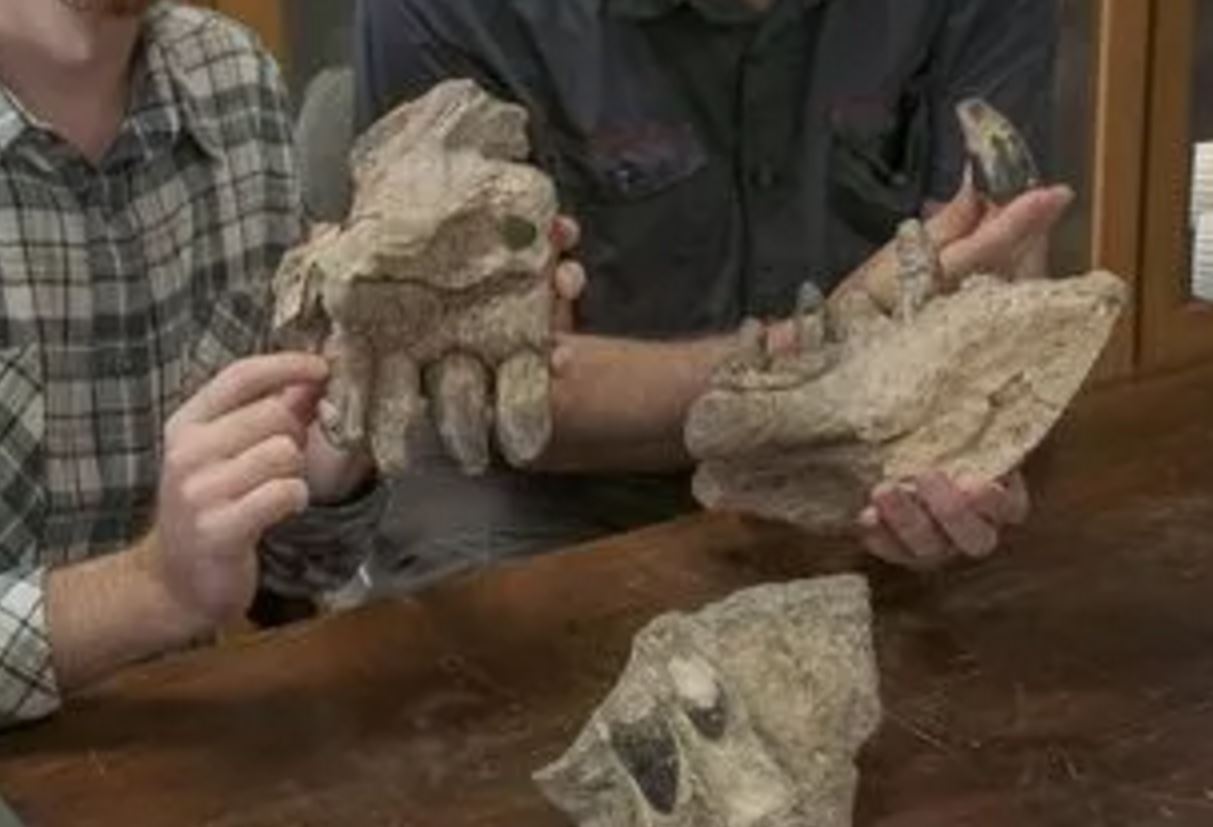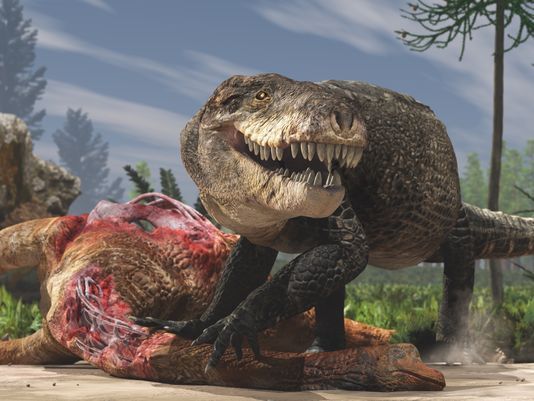Today's Madagascar is the land of lemurs, big-eyed creatures among the most huggable on the planet. But no one would want to hug the beast that once ruled this landscape.
New fossils reveal that 170 million years ago, a giant crocodile with serrated teeth like a Tyrannosaur rex haunted Madagascar. Powerful jaws and sharp-edged teeth signal it was an uber-predator. Even the advanced meat-eating dinosaurs called theropods weren’t immune.
The croc “could challenge a theropod dinosaur,” says vertebrate paleontologist Cristiano Dal Sasso of Italy’s Natural History Museum of Milan, co-author of a new study on the fearsome reptile. “You have an animal that was really a bone-cruncher,” and as big as a pick-up truck to boot.
The primitive croc had an estimated 46 to 48 teeth, which it could replace repeatedly if one fell out. Some teeth were serrated like steak knives. Not even T. rex had bigger serrations on its teeth, Dal Sasso says. Other teeth were perfectly shaped for scraping flesh off bones.

Tooth damage suggests the croc, known as Razanandrongobe sakalavae, or “Razana” for short, was crunching on bones and tendons, the researchers say in a study published today in the journal PeerJ. It probably ate whatever it wanted, including dinosaurs and the flying reptiles known as pterosaurs.
The primitive croc had an estimated 46 to 48 teeth, which it could replace repeatedly if one fell out. Some teeth were serrated like steak knives. Not even T. rex had bigger serrations on its teeth, Dal Sasso says. Other teeth were perfectly shaped for scraping flesh off bones.
Tooth damage suggests the croc, known as Razanandrongobe sakalavae, or “Razana” for short, was crunching on bones and tendons, the researchers say in a study published today in the journal PeerJ. It probably ate whatever it wanted, including dinosaurs and the flying reptiles known as pterosaurs.
Del Sasso suspects Razana was both a scavenger and an ambush predator, bursting out of hiding to bring down its prey. Unlike its living relatives, the croc probably strolled on upright legs, the researchers say.
As a result, “it was probably capable of pretty good speeds and probably more efficient running than modern crocodiles,” which can achieve 20 mph in short bursts, says Joe Sertich of the Denver Museum of Nature & Science, who was not associated with the new study.
If the study is correct, Razana belongs to a “bizarre family of (extinct) crocs that were fully adapted to living on land … and are very, very diverse,” says Diego Pol of Argentina’s Egidio Feruglio Museum, who was not part of the study team. This family, called the notosuchians, lived in the Cretaceous, and scientists have long hoped to find notosuchian ancestors from the Jurassic, the period before the Cretacous.
Razana, as a Jurassic animal, may fill that gap. It is among the biggest notosuchians and is certainly the oldest, says Pedro Godoy of Britain’s University of Birmingham, who was not part of Dal Sasso’s team. “This is much older than any other species of this group and expands (a lot) the age range during which these animals lived,” he says.
Pol is not convinced that Razana is a notosuchian because the fossils found to date are so fragmentary. Dal Sasso disagrees, citing numerous anatomical details to make his case. Either way, a notosuchian of such antiquity is “very interesting,” Pol says. “We can only hope that future expeditions can find more.”


